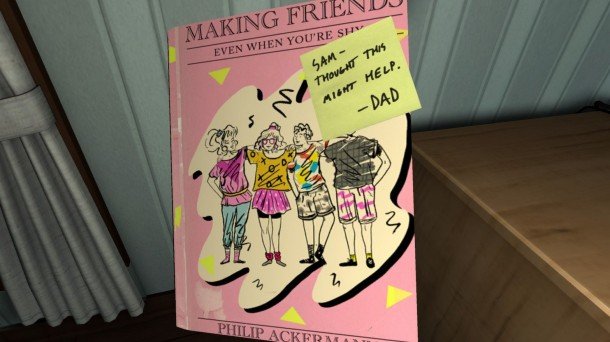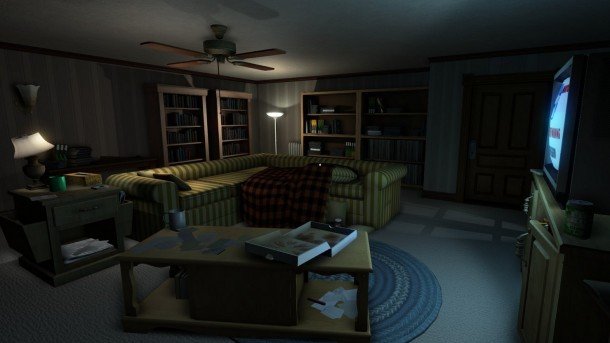The making of Gone Home

Now commences a discussion of the ending. If you haven't reached the ending, huge spoilers from here on.
The ending was a surprise to everyone. Samantha, the younger sister, and her crush Lonnie decide to run off together, something that is sort of reminiscent, to me anyway, of Thelma and Louise's driving into the sunset. Though Thelma and Louise's ending is somewhat more of the impending doom nature, there is a sense that Samantha and Lonnie do have a lot of obstacles in the way of their relationship - not least their youth, the disapproval of their parents - even society's disapproval itself. But it's a grand romantic gesture, a bid for freedom that ends on a happy, inspirational note, written with grace by Fullbright.
"The ending was a lot more melancholy for a really long time."
Was there a temptation to end the story with a grand tragedy instead?
“Not grand in the sense of everyone throws themselves down a well,” Karla says.
“We never had an ending where everybody was dead, it was never quite that far,” Steve says. “We did kind of start from the point of thinking of Romeo and Juliet being an initial archetypal model. The ending was a lot more melancholy for a really long time. They weren't going to get to be together at the ending and it was going to be kind of, not a straight up downer, still a sort of ambiguous semi-interpretive ending. As we were going to figure out what the motivators were as I was writing it. It was not fitting to us, this is just not interesting they grow apart and they don't get to be together, they feel kind of sad. Oh okay I guess they just felt sad? The end?

“So we wanted at that point we were resolved to say what's going to be interesting all of the obstacles that stand between them being together and that those weren't external obstacles that were like 'mum and dad say no'; they are internal obstacles like 'mum wants this and Sam has this in her future, and society that they're in has these expectations'. And so the conflict is internal between the two characters primarily and they want and the directions their lives are heading in. it's a relief and it's inspiring et cetera when they get together at the end, because they have overcome the things about themselves primarily that were going to keep them apart - and they've made this grand romantic gesture and put themselves through a totally uncertain situation that they're then going to have to deal with the reality of. We didn't know what the ending was until two weeks before we recorded the final voice session.”
"We didn't know what the ending was until two weeks before we recorded the final voice session."
“We had to let them have their moment, let them take their chance as it were,” Karla says.
Keep up to date with the most important stories and the best deals, as picked by the PC Gamer team.
Gone Home's ending echoes The Fullbright Company's decision to move to Portland, take a chance on their savings lasting and, for a year and a half, work on a game that they wanted to be different, to be inspirational, and to be solely about people and their relationships to each other. Samantha and her father's scribbles and notes illustrating the fictional lives of people they have created lie strewn across dark, empty rooms for the player to find. The house where Gone Home is set, and the house The Fullbright Company occupy, seem to be spaces where stories are possible. But as usual, Steve Gaynor is keen on downplaying any romantic notions I have about the place where Gone Home's story was born.
“It hasn't been too intense. We're all sharing the same space. If you have a housemate before, you don't see your housemate all the time. They go out and do stuff or whatever. I don't know. It hasn't been really dramatic or anything.”
Looking at Samantha's last note to her sister, Kaitlin, I can't really bring myself to agree.
For more on Gone Home, check out our review , Robert Yang's analysis of Gone Home, Thief and the Mansion Genre and Phillipa Warr's personal response, Going home with Gone Home .

